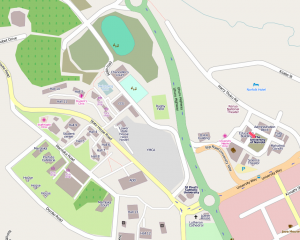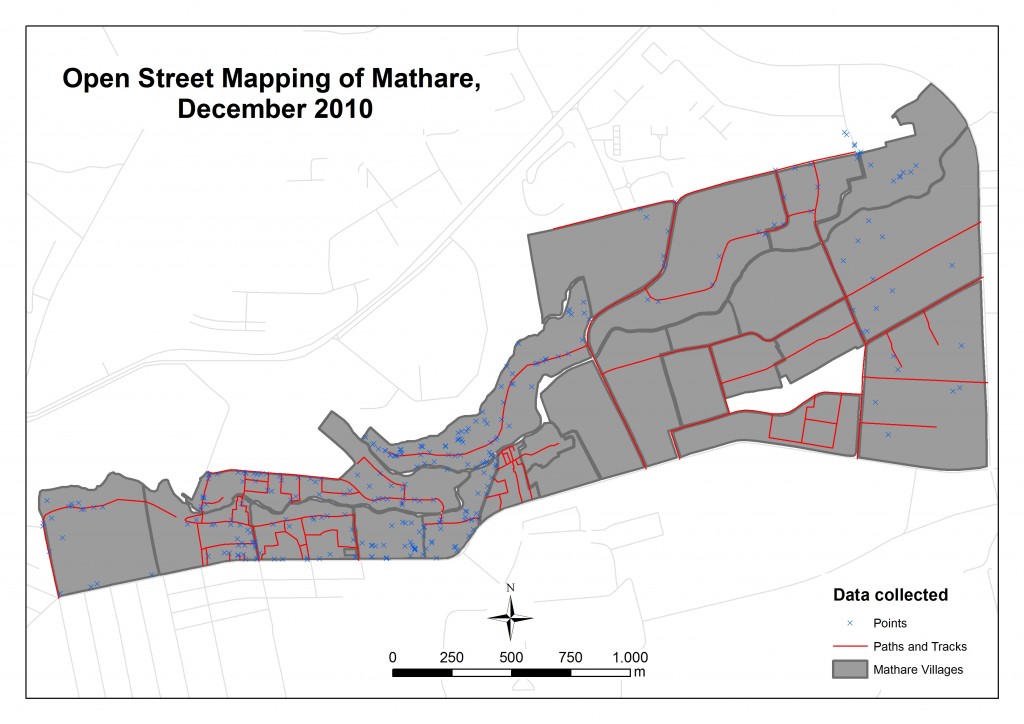This is a continuation of this post on the Kibera economy.
For the Map Kibera youth themselves, having enough money to simply survive (and often help family members survive) is the concern in the background of most of their lives and decisions (see this video by some members of KNN on the subject). It’s completely understandable that despite our efforts to convey a kind of collaborative DIY camaraderie in this project – ie, that we were bringing skills to share but were not “parents”, “employers”, or “matatu drivers” (see below), they still saw us as the white rich outsiders bringing opportunities and jobs. This is simply the mold we appeared to fit, and no matter what we said, it continued to be their impression. We stressed we were only bringing training not hiring them for a job. But they wanted a job! And they knew someone who “volunteered” with, xyz organization and received money for “transport and airtime” amounting to 3 or 4 times what one could possibly spend locally on that expense. (Over time, we found out that this was the norm in part because paying people became much more complicated legally and fiscally than giving out airtime vouchers – a distortion caused by donors suspicious of direct payment.)
So, the bigger issue of payment persisted with our own group. The mappers, videographers, SMS reporters, everyone wanted and wants to be paid. This makes sense, of course – they hope to and need to create a viable livelihood, but the idea that you can jump over the part where you actually learn the skill and go straight into a job market is based on experience with NGOs. We did pay participants a small amount particularly during the intensive mapping phase, (which we debated about endlessly with everyone we talked to in Kibera). We also helped create an organization, but it’s not for us – we’re not the employers and they’re not the employees of the organization – we’re merely assisting in a co-creation of a structure so they can carry forth and solicit donations and paid projects and take on expansion themselves. Or so we thought, incorrectly as it turns out. You see, Kenyans can be, well, rather indirect in such matters, if I may make a generalization.
This misunderstanding came to a head during our research with the Institute of Development Studies and focus groups with Sammy Musyoki brought out the fact that our group saw us in a particular, quite non-equal-opportunity way. Of course, we had discussed many times with everyone how the Trust was going to go – they all nodded ferociously at the end of casual conversations with KNN or the mappers, all of us crammed in to the tiny room in the KCODA offices, several to a chair, desk or bench, in which we all agreed about various roles and responsibilities. These meetings were often peppered with Mikel or I saying things like, “what do you think, guys, how do you want things to look?” or “we’ve never done this before either so we all have to work together, we don’t have all the answers.” In other words, I don’t want you getting the impression that we came in all teacherly and managerial and sat in front of the room or even had handouts or agendas or the various trappings of Western corporate bureaucracy, though to be sure at some point we began suggesting that the guys do things like write agendas and take minutes. Our approach with them was in no small way aimed at being, well, participatory. This open-ended stuff, we found, not only didn’t work but met with blank stares (what do you mean you don’t have everything worked out ahead of time!). Some of the reason for this came out in our Training of Trainers sessions with Aptivate, when they guys discussed their own learning experiences, which included being beaten by teachers with various implements for failing to understand math (and then being beaten with hockey sticks by rival sports teams). The British System here reminds me of my parents’ stories of Catholic school in the US in the 1940s.
During the discussions with Sammy, a Kenyan himself and skilled facilitator, the guys came out with various metaphors for our relationship with them – including employer/employee, parent/child, and even, matatu (bus) driver/passengers. They also envisioned us both as drivers who had left the bus stranded, and parents who didn’t apportion cake evenly to their children. It seemed our words on both money and leadership had never really hit home. At one point Sammy said, well, the matatu is valuable so if you don’t get in and drive it someone else will! Here’s your chance, in other words.
To make matters worse, getting small short-term jobs with NGOs often involves tasks that look somewhat like what we do – say, one can be hired as a “volunteer” survey-taker or “volunteer” going around talking to people about health, etc. Even attending training courses is often a paid activity – some organizations, for instance, pay participants so that they can afford to attend in lieu of whatever odd jobs and “hustling” (as the guys would say) that they might otherwise engage in. During our meetings, for instance at KNN, we would usually give attendees enough for lunch (literally about $1) which was still enough to have to later have to intentionally kick out the “lunchers” – those who never did anything but show up that one hour for lunch. More than any other group of people in a developing country or poor place that I’ve encountered, Kiberans are wise to the fact that without them, there is no GBV prevention, there is no health survey, there is no NGO. This may seem like convoluted logic, because obviously these programs are created to address needs in Kibera! But the fact is, I would also be a bit suspicious too, asking what’s in this for me, if I saw the likes of Melinda Gates, the president of the Nike foundation, and the executive director of Unicef visit me in Kibera within the span of a few months (Gates and Nike in the same week!) – evidence of huge numbers of donor dollars and international attention – and yet my own pockets were so empty that a mere toothache proved to be a debilitating ailment.
What’s the solution? I must honestly confess that when it comes to Kibera economics, I can’t fully answer that. I know, it’s a cop-out. The aid industry has somehow created an economy out of false promises and castles in the air, and now everyone’s discovered the world is a much more complicated place than they ever imagined and they can’t fix it in the way they once thought (though perhaps technology is the current candidate for silver-bullet). It’s true that the handout-dependency problem is alive and well, perhaps at its healthiest in Kibera. It’s also true that we do-gooders bear much of the burden for this. But it’s not true that we can’t expect something different, or act different ourselves.
By the end of our reckoning with Sammy and the Map Kiberans, which we later referred to as “group therapy”, we did have some ideas for what we can all do differently. For one, having skilled cultural mediators is critical – we had started with several, but unfortunately they had not held the rare set of qualities which really allows one to dance between several cultures and keep their own agenda in check all the while. The entire group of youth decided to take on driving the matatu, and the differences between them (and even us) seemed to dissolve in the relief at having gotten some of the hidden issues into daylight. I realized that one thing they craved was this kind of motivating joy of unity – we had a bit of a Map Kibera tent revival meeting. I thought that responsibility for the project was also shared more appropriately and the central reason for doing the project was centered back onto its social merit rather than personal profitability.
So, we have committed ourselves for the time being with slogging through the difficult process of working with our team of some 30 youth in three programs in Map Kibera Trust to turn the standard model around. Part of that means, everyone has to demonstrate commitment and draw up requirements for their own participation, be part of the budgeting and strategic planning for their own program and then create criteria for who receives money when and for what (whether it’s called stipend, lunch, transport, or salary). We want this to be a youth-led organization, in the long run. Our work in Mathare is structured differently, and we think this will help though it’s still early days. There are in fact several good role models, and a lot of people who’ve worked through all this before. We’ve spent a good deal of time clarifying the vision of the work and our role, and we’re now committed to a long-term capacity building and organizational development process in Kibera. Our group is still alternately frustratingly passive and expecting handouts, and so generous, creative, dedicated, and organized that they inspire me to keep doing everything I can to support them. The key is often to commit to the process, and know that at the heart of success will be inspiring some balance between self-interest and seeing the opportunities for selfless contribution to society. But isn’t that, in fact, the same balance we all strive – and sometimes fail – to achieve?
This post is part of a series exploring the ideas and issues that have emerged in our research project with Institute of Development Studies, supported by DFID. All posts from the Map Kibera team, the researchers from IDS, our trainers and colleagues are collected here. As always, we are eager to discuss this work, so we hope to hear your comments.

